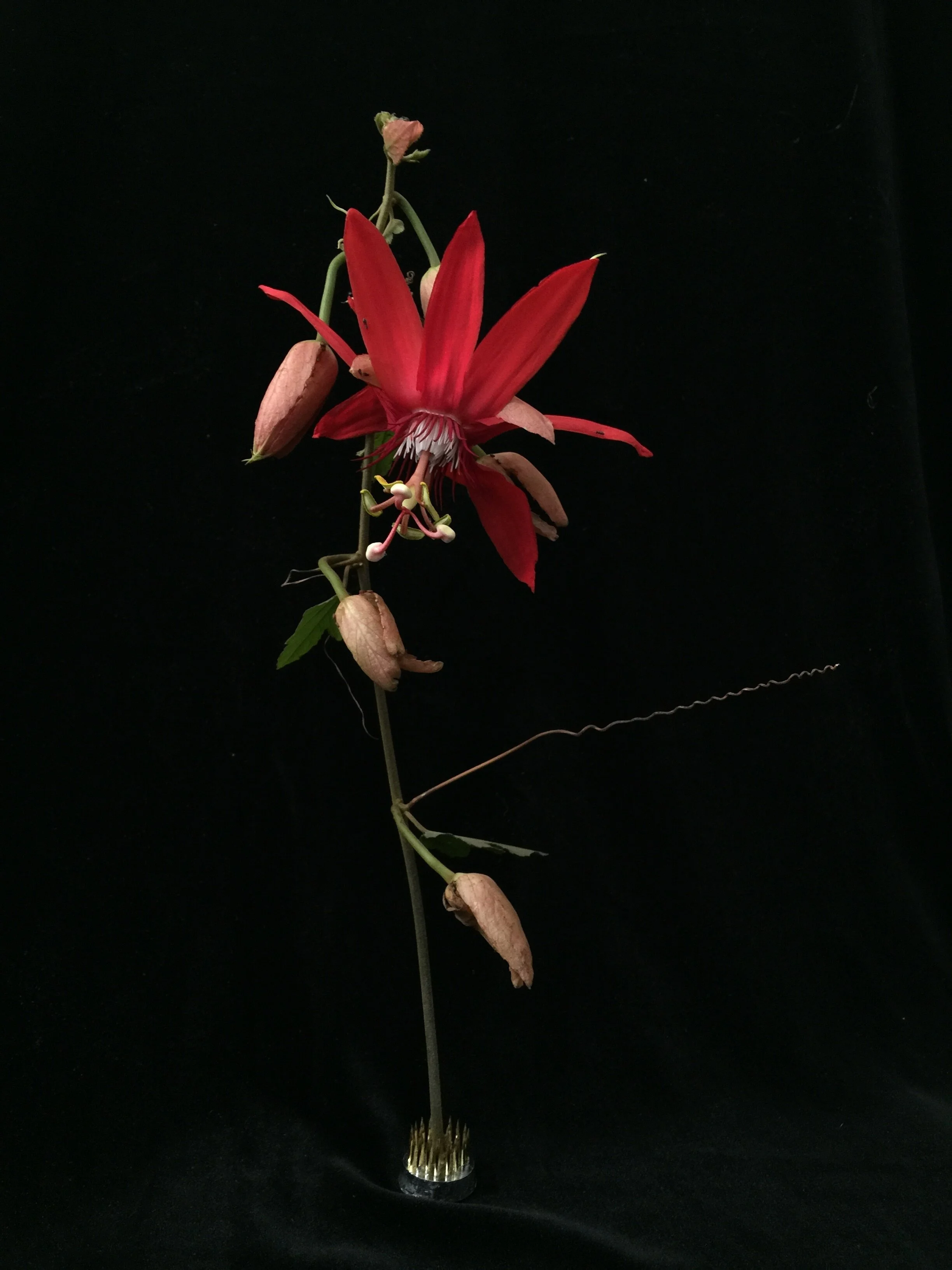The Gardener's Friend — On Passiflora miniata
You are a recipient of Coucou Postale, a postcard series designed to engage and delight readers through stories and art using good old fashioned mail and the magic of the Internet.
Passiflora minata — Brandon, Florida, 2020
Something worth writing about is funeral flowers. On the surface, it seems a grim conversation but I promise you some light on the topic.
At the beginning of the COVID-19 pandemic, my dear friend, Daun Miller, died. I wrote about her loss, and in particular, how we grieve in a time when social distancing and stay-at-home orders are the norms.
Bottom line: it’s not easy.
I wasn’t among the government-mandated ten people who attended her funeral, but I saw the pictures. Everyone was spaced out at six-feet intervals around her coffin, even the solo cellist. Her two sons (one of who is my oldest friend) and husband, sat in front of a flower-laden casket. Yellow roses and carnations, baby’s breath, chrysanthemum.
Chrysanthemum was a flower I often saw in the altars of homes and businesses in Vietnam. Yellow chrysanthemums are placed on ancestral altars as an offering and way to bless the family. In the weeks leading up to Chinese New Year, flower vendors lined our street — fittingly called Tu Hoa Cong Chua or Flower Princess — to sell pots of these remembrance flowers. The New Year is an ideal time to honor the deceased. The affair seemed anything but grim, the yellow tufted pom-poms cheering on the spirits of the afterlife and cheering up those left behind, including me, the bystander.
In Western culture, funeral arrangements exist to perform the same task, but particularly the act of placing flowers on coffins, such as my friend’s, or graves. Its origin has been debated at length, so I’ll spare you the dissertation. The short suggestion is that the custom is classical. Wrote Ovid between 43 BCE-17 CE (translated by Basil Kennet):
Tombs have their honors too, our parents crave
Some slender present to adorn the grave,
Slender the presents which the ghosts we owe
Those powers observe not what we give, but bow —
They only ask a tile with garlands crown’d,
And fruit and salt to scatter on the ground.
For me, the ultimate flower of remembrance is the passiflora, a genus that comprises more than 500 species. While it’s the sort of flower that ends up in few bouquets, let alone funeral arrangements, it’s nevertheless one I chose to honor my friend when I photographed it.
Why?
Well, for starters, it was a flower of my childhood, one that softened the steel link fence of our back garden, the same fence her son and I climbed at 13 to attend the carnival the catholic church hosted every year. Its burst of red petals among a tangle of green and brown proclaimed that summer was on its way. Compared to the prosaic dandelion it allowed for my imagination to run riot, confirming my belief that the universe was marvelous and weird. Who could have conceived of such a wild thing?
I wasn't alone. Sixteenth-century priests found the passiflora’s flower to be the perfect visual aid, divinely-ordained, to convey the story of Easter, particularly Christ’s sacrifice and suffering. Among the connections the priests made, the black circle of filaments was to represent Christ’s crown of thorns, while its five anthers were to remind us of the five sacred wounds on Christ’s hands, feet, and abdomen.
It’s quite grisly imagery to conjure in comparison to the burst of life the bloom becomes when the morning sun hits it just so, but it makes sense. Insomuch passiflora was promoted as the symbol of the Passion, the suffering and death of Christ, all flowers are a pertinent reminder of the fragility of our bodies, our enduring suffering the Buddha immortalized in his Four Noble Truths.
In her final weeks on this earth, Daun was suffering a great deal. No amount of flowers was going to ease her pain. The return of her cancer was vigorous and without mercy. The end was near. And yet, when I saw her a month before she died, she seemed to possess an inner glow. In Chinese medicine, there’s a word for it — haiguang-fanzhao, which poetically translates to “the last radiance of the setting sun.”
Flowers, like the people they’ve come to represent and honor, do the same. There’s a moment just before their petals limp or crinkle and fade when they seem to give it their all, offering up their most vibrant shade of color, saluting us like a solider in salute of life soon to be surrendered, but never forgotten. — GF

